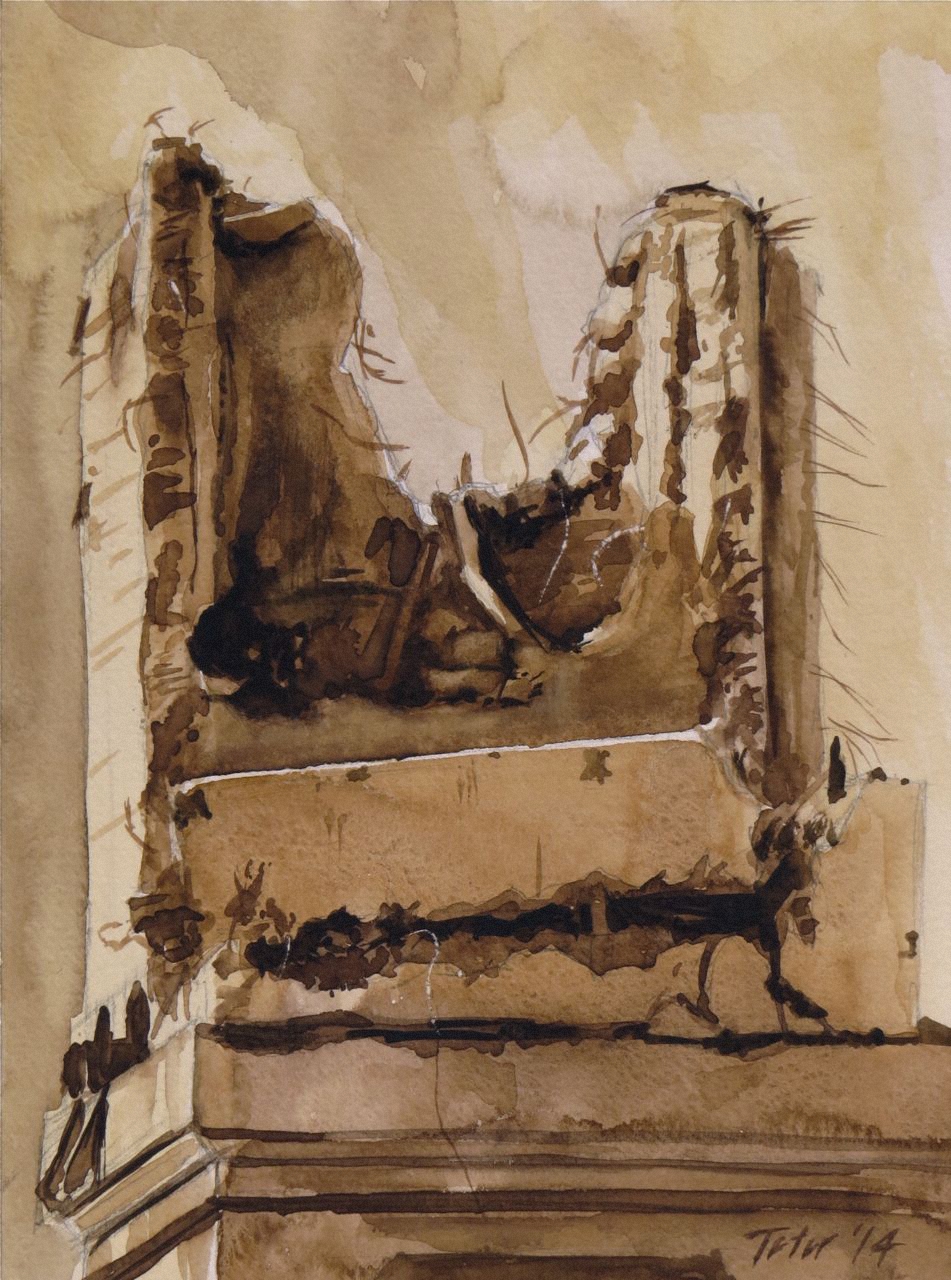I'm working on some other projects right now so I'm reluctantly pausing on these studies.
Here are some of my thoughts and observations after the first ten. I have done more but some did not work out.
Even a simple idea or motif can have endless possibilities and I am not short of those in this series.
It does not matter what the subject is VISUALLY, these could just as well be landscape rock formations, still life's or ancient ruins, which I am basing them on. I chose the ruins of the industrial landscape.
 |
| Source: Wikimedia Commons |
 |
| Study 7 |
 |
| Source: Wikimedia Commons |
 |
| Study 4 |
For the artist the same concerns apply the moment you sit down and begin working. You are faced with all the design issues of value, shape, composition, color etc.
But really all those are merely tools put to work to make the picture and present some idea or record some observation. You have to mold them into your vision.
The hard part is figuring out HOW to say it. And the combinations are limitless.
That is one reason for the studies. Another is to get familiar with the subject.
Some of these studies have a monumental scale to them as in 3 (below), 4 and 7 (above), while others rest within the picture frame peacefully like 6 and 8 (below).
 |
| Study 3 |
 |
| Study 6 |
Study 9 (below) is close to that monumental scale but is pulled back ever so slightly. It makes a subtle difference. This is middle distance cropped close. It is a little less commanding.
The relationship of distance and cropping is very much like any relationship of the art elements, they can be separated but are really tied together.
Crop in close on an object, from a near, middle and far distance and you get 3 different results relating to perspective and our perception.
 |
| Study 9 |
In Study 9, in addition to the practical reasons I noted in the post, I wanted to downplay its overall block shape. To do this I needed to put the focus on some other feature in order to modify its shape.
I de-emphasized the blockish straight sides by making the value close to that of the sky, losing its edges, then concentrated on the busted up concrete in shadow, climbing from the corner to its scooped out top.
Simply by adjusting values up or down you can overcome predominant shapes to suit your end goal.
Study 2 could have that monumental sense too but is tamed somewhat through values and edges. And even though it is cropped tight like Study 3 its angles are less severe. It makes a difference.
 |
| Study 2 |
No one factor or element really does it on its own. It is the interplay of the various combinations.
See my Daily Paintworks page for available works from this series.































